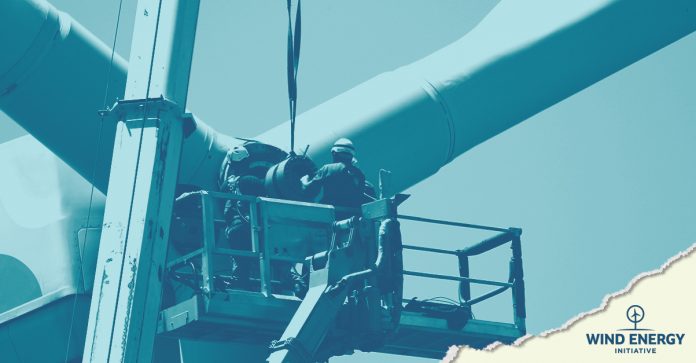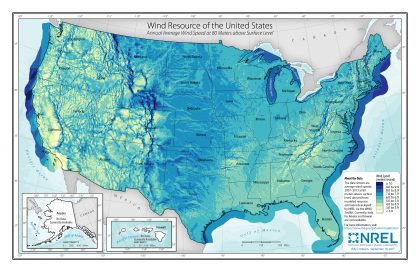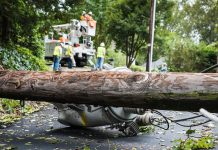
Wind energy across the U.S. is already giving the country nearly 7.3 percent of its electricity generation, and it couldn’t come at a better time to help provide additional sources of power for our nation’s energy consumers.
As of October 2020, there were more than 65,000 wind turbines capable of cranking out 108,942 Megawatts (MW) of electricity all over the country, from the bluebonnet fields of Texas to the windswept plains in the Midwest and out to Rhode Island’s coastal waters.
Together, these turbines with an average capacity of 1.66 MW can generate enough electricity to power roughly 29 million homes each month, according to calculations based on U.S. government data. It takes the average turbine 95 minutes to capture enough wind energy to power the average home for a month.
With all of this capacity, it is no surprise that the U.S. is home to some of the largest wind farms in the world, and is second only to China for wind power, according to the Global Wind Energy Council.
 While most of the wind power we have is onshore, the first commercial offshore wind farm in the U.S. began operations in 2016 off of Block Island, RI, which produces 30 MW of wind. Though this is the first of its kind in the U.S., there have been record-setting federal lease sales for offshore wind development in parts of the Mid-Atlantic which, once constructed, are expected to generate roughly 4.1 Gigawatts of power.
While most of the wind power we have is onshore, the first commercial offshore wind farm in the U.S. began operations in 2016 off of Block Island, RI, which produces 30 MW of wind. Though this is the first of its kind in the U.S., there have been record-setting federal lease sales for offshore wind development in parts of the Mid-Atlantic which, once constructed, are expected to generate roughly 4.1 Gigawatts of power.
Based on current trends, the U.S. Department of Energy projects that there will be roughly 224 Gigawatts of installed wind capacity – more than tripling wind production by 2030. If this production is done in conjunction with improvements being made every day to large-scale transmission infrastructure, that will lead to the creation of power for close to 84 million homes, according to our estimates.
Moreover, elected leaders in states across the nation have pledged to move their public utilities to cleaner sources of energy.
Fortunately for consumers, costs have come down through these large-scale wind power investments and are expected to come down even further by 2030. Together with increased industrial-scale solar energy investments, the U.S. has an almost boundless wind- and sun-powered potential to pair with existing natural gas and nuclear generation.
It might come as a surprise that wind projects, with all their clean power advantages, face the same kind of anti-energy tactics and activism employed to try and block oil and natural gas projects and pipelines. No matter how you slice a piece of the energy pie, time is of the essence because the demand for energy keeps increasing, and the new charges on customers’ power bills caused by clean energy mandates are going to come sooner than that.
Wind is already a natural occurrence that is owned by all of us, and it should be turned to our benefit as often as possible. With decreasing costs and longer blades, plus the addition of fuel cells and battery storage, large-scale wind – along with oil, natural gas, solar, energy efficiency, and conservation – will be an excellent addition to the nation’s mix of clean energy.
That’s something to tell your friends, neighbors, and elected officials when the conversation turns to clean, affordable energy choices.











